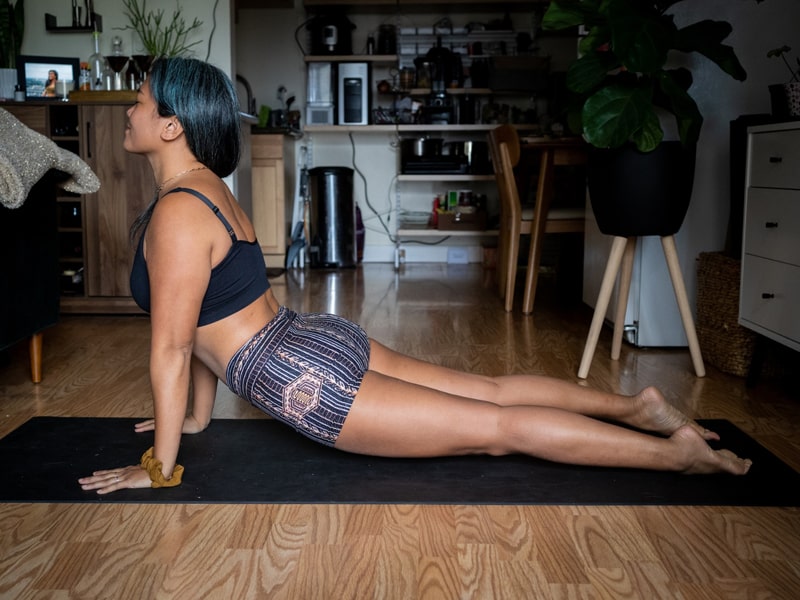The science behind yoga and asthma
Several studies have been conducted to investigate the link between yoga and improved asthma symptoms. A review of several randomized controlled trials found that yoga can lead to significant improvements in lung function, as well as reductions in asthma symptoms such as coughing and wheezing. Another study found that a 12-week yoga intervention led to a significant improvement in asthma-related quality of life.
The physiological mechanisms by which yoga can benefit asthma sufferers are not fully understood. However, it is believed that yoga can help to reduce inflammation in the airways, which is a key factor in the development of asthma. Yoga may also help to improve lung function by strengthening the muscles used in breathing and increasing lung capacity.
Yoga poses that involve deep breathing, such as pranayama, can help to improve breathing by increasing the amount of oxygen that reaches the lungs. Additionally, yoga can help to reduce stress and anxiety, which can trigger asthma attacks. This may be due to the relaxation response that is triggered by the combination of physical postures, breathing exercises, and meditation in yoga practice.
Overall, the research suggests that yoga can be an effective complementary therapy for individuals with asthma, it can help to improve symptoms, reduce the need for medication and improve overall quality of life. However, it is important to note that more research is needed to fully understand how yoga can benefit asthma sufferers and how to optimize the practice for individuals with asthma.
Yoga poses and breathing techniques for asthma
There are several yoga poses and breathing techniques that can be particularly beneficial for individuals with asthma.
-
Anulom Vilom (Alternate Nostril Breathing) :- This pranayama technique involves breathing in and out through one nostril at a time, which can help to improve lung function and reduce asthma symptoms.
-
Bhastrika (Bellows Breath) :- This pranayama technique involves rapid, forceful breathing, which can help to open up the airways and improve lung function.
-
Ujjayi (Victorious Breath) :- This pranayama technique involves breathing with the glottis partially closed, which can help to slow down the breath and improve lung function.
-
Trikonasana (Triangle Pose) :- This standing pose helps to open up the chest and lungs, making it easier to breathe.
-
Setu Bandhasana (Bridge Pose) :- This pose helps to open up the chest and lungs, and also strengthens the muscles used in breathing.
-
Matsyasana (Fish Pose) :- This pose helps to open up the chest and lungs, and also strengthens the muscles used in breathing.
-
Virabhadrasana (Warrior Pose) :- This pose helps to open up the chest and lungs, and also strengthens the muscles used in breathing.
It’s important to note that people with asthma should consult with their doctor or healthcare professional before starting a yoga practice and they should be careful while practicing these poses and breathing techniques, as it can exacerbate asthma symptoms if done incorrectly.
In general, it’s important to approach yoga practice with caution if you have asthma, begin with easy and simple poses and breathing techniques and gradually increase the difficulty level as you become more comfortable with them.
Also Read :- 13 Best Yoga Pants for Women in India
Safety considerations for practicing yoga with asthma
It is important for individuals with asthma to take certain safety considerations into account when practicing yoga.
-
Consult with a doctor or other healthcare professional :- It is important for individuals with asthma to consult with their doctor or healthcare professional before starting a yoga practice. They may have specific recommendations or guidelines to follow.
-
Start slowly :- If you are new to yoga or have not practiced in a while, it is important to start slowly and gradually increase the difficulty level as you become more comfortable with the practice.
-
Pay attention to your body :- Listen to your body and be aware of any changes in your asthma symptoms while practicing yoga. If you experience any difficulty breathing or chest tightness, stop the practice immediately and seek medical attention if necessary.
-
Avoid poses that may exacerbate asthma symptoms :- Certain yoga poses, such as inversions, may exacerbate asthma symptoms. It is important to avoid these poses or to modify them with the guidance of a qualified yoga instructor.
-
Keep an inhaler nearby :- It is a good idea to keep an inhaler nearby during your yoga practice in case of an asthma attack.
-
Practice in a well-ventilated area :- It is important to practice yoga in a well-ventilated area to ensure that you are getting enough oxygen.
-
Avoid vigorous practices :- Avoid vigorous practices like power yoga, Bikram, Ashtanga or hot yoga, as the heat and humidity can be too much for some individuals with asthma.
It is important for individuals with asthma to approach their yoga practice with caution and to be aware of any changes in their asthma symptoms. If you experience any difficulty breathing or chest tightness while practicing yoga, it is important to stop the practice immediately and seek medical attention if necessary.
Conclusion and recommendations for further research
In conclusion, yoga can be a safe and effective complementary therapy for individuals with asthma. Research has shown that yoga can lead to significant improvements in lung function and reductions in asthma symptoms. Yoga may help to reduce inflammation in the airways, improve lung function and reduce stress and anxiety which can trigger asthma attacks.
However, it is important for individuals with asthma to consult with their doctor or healthcare professional before starting a yoga practice, and to take certain safety considerations into account when practicing. They should start slowly and pay attention to their body, avoiding poses that may exacerbate asthma symptoms and keeping an inhaler nearby.
While the studies have shown promising results, more research is needed to fully understand how yoga can benefit asthma sufferers and how to optimize the practice for individuals with asthma. Future research should focus on determining the optimal frequency and duration of yoga practice, as well as the specific yoga poses and breathing techniques that are most effective for individuals with asthma. Additionally, more research is needed to understand the underlying physiological mechanisms by which yoga can benefit asthma sufferers.



